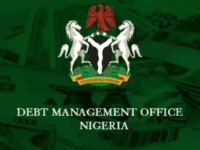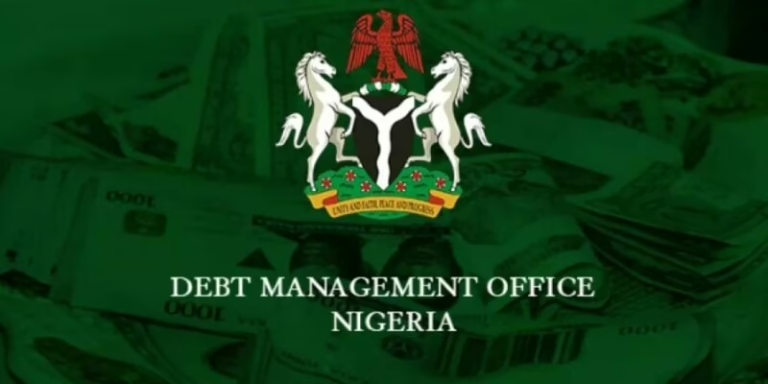As of June 30, 2025, Nigeria’s total public debt surged to N152.40 trillion, marking an 11.6 percent increase compared to the previous year, according to the latest figures released by the Debt Management Office (DMO) on Saturday.
This rise represents an additional N15.89 trillion from the N136.51 trillion recorded in June 2024, underscoring the persistent growth of Nigeria’s debt amid ongoing fiscal challenges.
When measured in U.S. dollars, the nation’s debt climbed from roughly $89.15 billion last year to $99.66 billion by mid-2025, reflecting an 11.7 percent year-over-year increase.
The DMO’s detailed report reveals that the federal government’s liabilities constitute N141.08 trillion, or 92.6 percent of the total debt. This sum is split between N64.49 trillion in external borrowings and N76.59 trillion in domestic obligations.
External debt rose to $46.98 billion (N71.85 trillion) in June 2025, up from $42.10 billion (N66.56 trillion) a year earlier.
Nearly half of this external debt is owed to multilateral institutions such as the World Bank, African Development Bank, IMF, and Islamic Development Bank. The World Bank alone accounts for $18.04 billion, approximately 38 percent of Nigeria’s total external debt.
Bilateral loans total $6.20 billion, with the Export-Import Bank of China holding the largest share at $4.91 billion. Commercial borrowings, primarily through Eurobonds, amount to $17.32 billion-representing 36.9 percent of the external debt portfolio-exposing Nigeria to risks from fluctuations in global financial markets.
On the domestic front, Nigeria’s debt expanded by 11.2 percent year-on-year, reaching N80.55 trillion in June 2025, up from N72.41 trillion in June 2024.
The majority of local debt is made up of federal government bonds totaling N60.65 trillion. This includes FGN bonds, securitized Ways and Means advances from the Central Bank of Nigeria (CBN), and dollar-denominated bonds.
Additional domestic debt instruments encompass Treasury bills valued at N12.76 trillion, Sukuk bonds at N1.29 trillion, as well as savings bonds, green bonds, and promissory notes. The conversion of the CBN’s Ways and Means advances into securitized debt highlights ongoing fiscal pressures, even as the government strives to restore monetary discipline and boost investor confidence.
The year-on-year debt increase reflects the government’s heavy dependence on both foreign and local borrowing to finance budget deficits amid economic reforms and external shocks. Experts warn that the growing debt stock amplifies fiscal vulnerabilities, particularly given Nigeria’s reliance on international capital markets and concessional loans.
Between March and June 2025, Nigeria’s total public debt rose by N3.01 trillion, a 2.01 percent increase from N149.39 trillion to N152.40 trillion. In dollar terms, the debt grew by 2.49 percent, from $97.24 billion to $99.66 billion.
The federal government’s share remains dominant at N141.08 trillion, comprising N64.49 trillion in external debt and N76.59 trillion in domestic liabilities, underscoring continued reliance on borrowing to address fiscal gaps amid reforms in revenue generation and foreign exchange management.
Further analysis shows external debt increased slightly from $45.98 billion (N70.63 trillion) in March to $46.98 billion (N71.85 trillion) in June 2025.
The World Bank continues to be Nigeria’s largest external creditor, holding $18.04 billion primarily through the International Development Association (IDA), which accounts for 38 percent of total external debt.
Multilateral lenders collectively hold $23.19 billion, or 49.4 percent, of Nigeria’s external debt. Other significant multilateral creditors include the African Development Bank, IMF, and Islamic Development Bank.
Bilateral loans stand at $6.20 billion, with the Export-Import Bank of China as the leading lender at $4.91 billion, followed by smaller exposures from countries such as France, Japan, India, and Germany.
Commercial borrowings, mainly through Eurobonds, total $17.32 billion, representing 36.9 percent of external debt, while syndicated loans and commercial bank facilities amount to $268.9 million.
Analysts caution that Nigeria’s substantial Eurobond exposure increases its susceptibility to global market fluctuations, while its dependence on concessional multilateral financing highlights ongoing fiscal constraints and limited access to affordable credit.
Domestically, debt rose from N78.76 trillion in March to N80.55 trillion in June 2025, a 2.27 percent increase of N1.79 trillion.
Federal government bonds dominate the local debt structure at N60.65 trillion, accounting for 79.2 percent of domestic liabilities. This includes N36.52 trillion in FGN bonds, N22.72 trillion from securitized Ways and Means advances from the CBN, and N1.40 trillion in dollar-denominated bonds.
Other domestic debt instruments include Treasury bills worth N12.76 trillion (16.7 percent), Sukuk bonds at N1.29 trillion, savings bonds totaling N91.53 billion, green bonds at N62.36 billion, and promissory notes amounting to N1.73 trillion.
The securitization of the CBN’s Ways and Means advances-transforming short-term overdrafts into long-term debt-reflects the fiscal challenges facing the current administration, even as efforts continue to enforce monetary discipline and enhance investor trust in Nigeria’s economy.






















